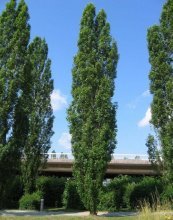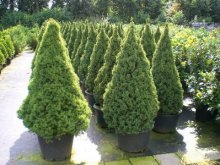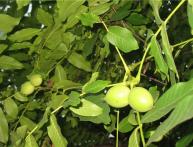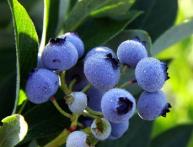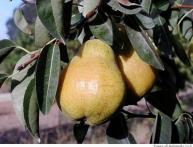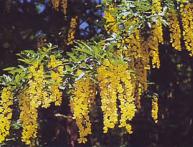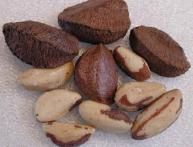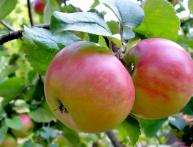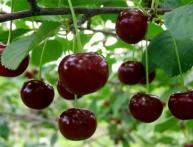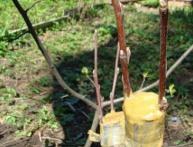Fast-growing trees for a suburban area
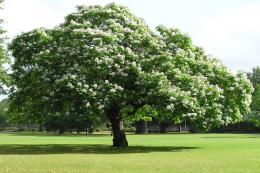
In landscape design, in addition to ornamental plants, various trees are used to decorate a summer cottage. To suburban area To plant trees as soon as possible, choose fast-growing trees. There are different types of fast growing trees.
Content:
- Deciduous fast-growing trees
- Coniferous species of fast-growing trees
- Types of fast-growing fruit trees
- What you need to know when choosing fast-growing trees
Deciduous fast-growing trees
Of the shady trees, they choose mainly deciduous trees with a dense and wide crown. You can not only take a walk under such trees, but also relax and have lunch. They can grow up to 40 meters in height. Shade trees include:
- Northern red oak. A tree with a wide trunk covered with smooth and gray bark. Grows well in moist and acidic soils. It can reach a height of up to 21 meters. The oak leaves are shiny with a reddish tint, about 25 mm long. Red oak is resistant to frost and wind. This is a light-loving and shade-tolerant tree. It is recommended to plant in early spring.
- Maple. It can reach a height of up to 40 m. This fast-growing tree is very decorative in the autumn, as the leaves have a beautiful shape and are distinguished by a variety of colors.
There are different types of maples: Norway maple, ash-leaf, fan, green-winged, red, silver, etc. Each type requires certain soil conditions. Tulip tree.This is a tall, straight-trunked tree, the height of which can be about 30 m. It grows best on loose soils with a high humus content. Another name for the tulip tree is yellow poplar because the leaves of the two trees are very similar. After flowering, yellow poplar can litter the area, so it is better to plant it over a large area.
Gray Elm. This large tree has a rounded and elliptical crown. Depending on the type, the height can vary from 10 to 40 meters. The following types are used for landscaping: rough elm, hornbeam elm, small-leaved elm, smooth elm. They grow mainly on loose, fertile and alkaline soils. Thanks to its dense foliage, the elm provides dense shade, but the tree itself loves illuminated areas. This ornamental tree is used for landscaping suburban areas, creating group and mixed plantings, as well as hedges.
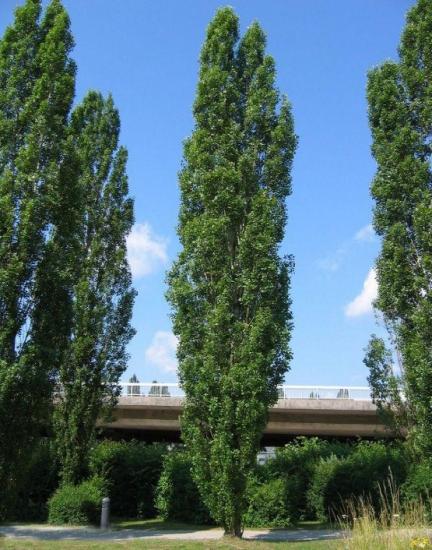
Poplar. Unlike other deciduous trees, it is the largest. The average height is about 40-45 meters, and some species can reach 60 meters. This deciduous tree with decorative foliage and crown is very often used in landscaping. It is better to use specimens that do not form poplar fluff. Leucoid, delta and balsam poplars are used in landscape design.
Birch. Can grow up to 2 meters per year. Prefers spacious and damp places. Among all the varieties of this tree, the most common are curly and silver birch. The tree is used in the garden for landscaping small recreation areas. White acacia. The tree is tall with a spreading crown. In the first year, the plant can grow more than one meter in height.During the flowering period, beautiful acacia flowers will delight you with their aroma for a long time.
Coniferous species of fast-growing trees
Any type of coniferous trees will transform the appearance of any suburban area. The following types of coniferous trees are capable of growing in a short time. European larch. A tall, monoecious coniferous tree with soft needles that turn light green in spring and golden yellow in autumn. Larch is a winter-hardy and durable tree. Fir. Evergreen coniferous tree. The needles are arranged spirally, solitary. There are different types of this decorative coniferous species. The most popular is the single-color fir, since this particular species has soft, non-thorny needles and does not shed them for the winter.
Eastern white spruce. The tree is evergreen with blue-green needles. The height can reach 25 meters. Prefers to grow in moist, acidic soil and well-lit places. Liessuga thyssolifolia. A large coniferous tree about 60 meters high. The needles are bluish-green, soft, slightly curved.
Video about fast growing trees:
It produces a pleasant aroma when rubbed. The cones are ovoid and differ from other breeds in their structure. Thuja folded. The thickness of the trunk can reach up to 4 meters, and the height - 60 meters. The bark is reddish-brown and thin. The needles are shiny and flat on one side with a yellowish-green tint, and on the other - dark green. This is a light-loving plant, so it should be placed in illuminated areas.
Types of fast-growing fruit trees
Fruit trees grow a little slower than regular ornamental trees. Rowan. It is a very decorative and valuable fruit tree.In the spring, the tree will decorate the area or garden with beautiful and lush blossoms, and in the fall - with clusters of bright orange berries. Mulberry is white. A tall fruiting plant that can reach 20 meters in height. The spherical crown consists of trunks with brown bark.
Mulberry fruits are black-violet in color, taste sweet and sour, and are juicy. They are used for food not only in processed, but also in fresh form. Maclura. A tree with a rolling, large crown and prickly shoots. The leaves make the tree especially decorative - dark green on the outside and light on the inside. The tree has a round fruit, which is shaped like an orange and has healing properties.
What you need to know when choosing fast-growing trees
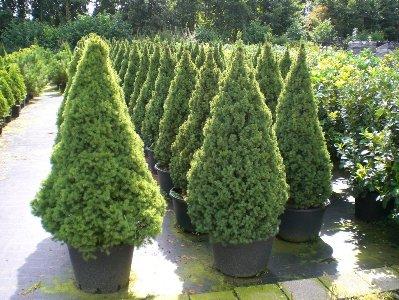
When choosing fast-growing trees and shrubs, you should take into account the size of the site. If the garden plot is small, then the seedlings should be medium-sized. 3-4 pieces will be enough. The rest of the space can be landscaped with shrubs.
These trees are not able to grow to the size of a large tree in a year, even despite their name - fast-growing. After planting in the first year, the trees get used to their habitat and grow slightly.
Only then, from the second year, do the trees begin to grow rapidly, and the growth per year is about a meter, and sometimes even more. When planting, consider the location of the trees and how they will fit into the landscape. landscape. The seedlings should be placed so that the trees do not subsequently block the area from the sun. Coniferous trees should be trimmed on time. In a short time, you can turn a suburban area into a real picturesque landscape, and fast-growing trees will help with this.
Interesting information about the vegetable garden

